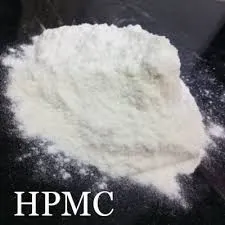
Nov . 26, 2024 23:29 Back to list
Methods for Effectively Dissolving HPMC in Water for Various Applications
How to Dissolve HPMC in Water A Step-by-Step Guide
Hydroxypropyl methylcellulose (HPMC) is a widely used hydrocolloid employed in various applications, from pharmaceuticals to food and construction. To fully leverage its benefits, it is essential to understand how to dissolve HPMC in water properly. This article provides a comprehensive guide to help you achieve a uniform and effective HPMC solution.
Understanding HPMC
Before diving into the dissolution process, it is important to understand what HPMC is. HPMC is a semi-synthetic polymer derived from cellulose, characterized by its ability to form gels and thicken solutions. It is non-toxic, odorless, and offers excellent stability in various pH environments, making it suitable for diverse applications, including as a binder in tablets, an emulsifier in sauces, or a thickening agent in coatings.
Preparing for Dissolution
1. Gather Your Materials
To dissolve HPMC effectively, you will need the right materials and equipment - HPMC powder - Distilled water (or the appropriate solvent depending on your application) - A clean mixing vessel - A stirring device, such as a magnetic stirrer or a whisk - A scale for measuring the HPMC - Heat source (if required)
2. Measure the HPMC
The first step in the dissolution process is to determine how much HPMC you need. The concentration of HPMC will vary depending on your desired application, ranging from 1% to 5% by weight. Using a scale, accurately measure the appropriate amount of HPMC powder.
Dissolving HPMC
1. Initial Water Preparation
If you are using distilled water, measure the necessary volume corresponding to the amount of HPMC you have. The water should be at room temperature; however, if you are looking for quicker dissolution, slightly warm water can facilitate the process. Avoid using boiling water, as extreme temperatures can affect the viscosity and performance of the HPMC.
how to dissolve hpmc in water

To prevent clumping, gradually sprinkle the HPMC powder into the water while stirring continuously. This step is crucial as it helps to avoid the formation of lumps which can occur if HPMC is added too quickly into water. Ensure that you are stirring gently yet thoroughly to encourage proper wetting of the powder.
3. Stirring and Hydration
Once all the HPMC has been added, continue stirring the mixture. It’s important to maintain consistent agitation to promote even hydration of the HPMC. The hydration process usually takes around 15 to 30 minutes, depending on the concentration of HPMC and the temperature of the water.
If you notice any lumps forming, increase stirring speed or switch to a mechanical stirrer for better efficiency until the solution becomes homogeneous.
Heating the Mixture (Optional)
In some cases, especially for higher concentrations, applying heat can help achieve a better solution. If you choose to heat the mixture, do so gently. Keep the temperature below 60°C (140°F) to prevent denaturation of the polymer.
Final Adjustments
Once the HPMC is fully dissolved, you may need to adjust the viscosity or concentration depending on your application. If the solution is too thick, you can dilute it with additional water, while a thicker solution can be achieved by adding more HPMC gradually.
Storage
If you do not plan to use the HPMC solution immediately, store it in a clean, airtight container at room temperature. Avoid direct sunlight and extreme temperatures to maintain the stability of the solution.
Conclusion
Dissolving HPMC in water is a straightforward process that can significantly enhance your project’s efficiency and outcome. By following the steps outlined above, you can ensure a smooth, lump-free solution that meets your specific needs. Whether you are using it for food, pharmaceuticals, or other applications, understanding the correct method to dissolve HPMC is crucial to achieving the best results in your endeavors. So, prepare your materials, follow the steps, and enjoy the versatility that HPMC brings to your applications!
-
HPMC for Tile Adhesive: Superior Bonding & Workability
NewsAug.30,2025
-
Premium Cellulose Ether: Effective Liquid Thickener Solutions
NewsAug.29,2025
-
HPMC for Tile Adhesive: Enhanced Bonding & Workability
NewsAug.28,2025
-
tile-bonding-additives-for-stronger-bonds
NewsAug.22,2025
-
construction-grade-rdp-for-wholesale-needs
NewsAug.22,2025
-
trusted-hec-supplier
NewsAug.22,2025







